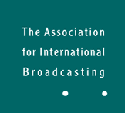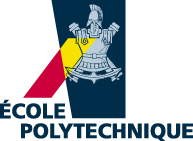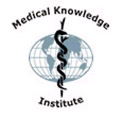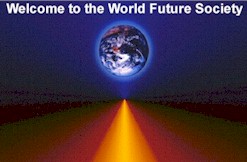
Helen Shaw: Regulating broadcasting – for citizens or consumers?

Helen Shaw, Managing Director, Athena Media Ltd
| Regulating broadcasting – for citizens or consumers? The way the two words run together, citizens and consumers, one can often think they are the same people . OFCOM, the new integrated regulator in the UK defines itself as serving the interests of the ‘citizen-consumer’ – a new Anglo-Saxon kenning literally fusing the two together. But the interests of citizens and consumers are not the same and can often be in conflict – not just in broadcasting and communications regulation – but in other parts of civic life. Here in Ireland, for example, we introduced a tax on plastic bags some years ago, a tax both consumers and shopping centres resisted, in their interests, but which has served the interests of citizens and civic society by rapidly removing plastic litter and reducing our consumption of plastic, non-recyclable bags. In the broadcasting sphere the Irish regulator, the Broadcasting Commission of Ireland (BCI), which has responsibility for the regulation of broadcasting advertisement code, has spent much of the year in detailed consultation on a new children’s advertisement code which will control advertisement aimed at children under 18 years. While the code has raised the conflicting issues of children as consumers and citizens it has also flagged the difficulties for all of us in Europe attempting to creating content regulation in an individual state. Ireland has one of the highest European trans-national TV penetration rate with over 80% of consumers able to view a wide range of Irish, UK and international channels and nearly half the TV audience has digital satellite or cable television. Yet content regulation, whether for programmes or advertisement, is nationally based and affects only the terrestrial offerings. The Irish TV case highlights the need for greater pan-European regulation codes which create minimum standards across Europe and which provides a European context for the debate for short term consumer demands and long term citizen interests and rights. For small European nations like Ireland, with a population of just 4 million in the Republic, the sea of global choices is welcome but can equally wash out the national cultural needs and interests of the place and people. Ireland has two languages, Irish and English, and an increasing challenge for broadcasting regulation here is not just to serve the lowest common denominator but to take a long term view of how regulation can encourage quality home produced programming which reflects national heritage, culture and language and which provides a contemporary debate for a modern thriving economic and political state. In Ireland a new integrated regulator, the Broadcasting Authority of Ireland, is about to be created merging the regulatory role of the BCI and the RTE Authority which governs the public broadcasting company, RTE. This is ironically a stage beyond OFCOM, which has only minor regulatory powers relating to the BBC which is still regulated by the Board of Governors. The proposed BAI in Ireland is an opportunity to develop a new template for broadcasting regulation but it needs debate and time and most importantly of all it needs consolidating legislation creating an adequate legal and regulatory framework for the future. One of the key issues may be that two years down the road since it was proposed it is already out of dated. A body called the Broadcasting Authority of anywhere is missing the point that Broadcasting is now only an aspect of the future of both content production and delivery. The new body needs to be a Media Authority which as in Australia combines both broadcasting and the internet reflecting that now and in the future television is as likely to be delivered over mobile new media platforms as through a TV box in the living room and reflecting that a debate over citizens and consumers needs to see the holistic nature of content whether programming or advertisement across all platforms |
Helen Shaw, Managing Director, Athena Media Ltd, Irelandspeaks at our Summit for the Future 2005 about the future of Media & Entertainment
News about the Future

Solar hydrogen – energy of the future
A team of Australian scientists predicts that a revolutionary new way to harness the power of the sun to extract clean and almost unlimited energy supplies from water will be a reality within seven years.
Using special titanium oxide ceramics that harvest sunlight and split water to produce hydrogen fuel, the researchers say it will then be a simple engineering exercise to make an energy-harvesting device with no moving parts and emitting no greenhouse gases or pollutants.
It would be the cheapest, cleanest and most abundant energy source ever developed: the main by-products would be oxygen and water. Rooftop panels placed on 1.6 million houses, for example, could supply Australia’s entire energy needs.
“This is potentially huge, with a market the size of all the existing markets for coal, oil and gas combined,” says Professor Janusz Nowotny, who with Professor Chris Sorrell is leading a solar hydrogen research project at the University of NSW Centre for Materials and Energy Conversion. The team is thought to be the most advanced in developing the cheap, light-sensitive materials that will be the basis of the technology.
“Based on our research results, we know we are on the right track and with the right support we now estimate that we can deliver a new material within seven years,” says Nowotny.
- 1.6 million individual households equipped with 10m x 10m solar hydrogen panels would meet all of Australia’s energy needs.
- Hydrogen generated from water using solar energy constitutes a clean source of energy as neither its production nor its combustion process produces greenhouse or pollutant gases. Hydrogen produced by existing conventional methods emits carbon dioxide at the production stage.
- When this technology matures it would allow Australia to be a leader in solar technology, becoming part of an OPEC of the future. Australia is ideally placed to commercialise this technology as it has abundant sunlight.
- This technology ultimately will reduce Australia’s total reliance on coal, gasoline and natural gas, providing energy security.
- Titanium dioxide is plentiful and cheap. Titania ceramics also have many other applications, including water purification, anti-viral and bacteriacidal coatings on hospital clothing and surfaces, self-cleaning glasses, and anti-pollution surfaces on buildings and roads.
- As sources of fossil fuels disappear, the race is on to be the world’s leading provider of hydrogen. The US Government recently committed an extra US$1.2 billion to hydrogen research. Japan has launched a 20-year research program that is sending satellites into space in the hope that it can harvest solar energy and send it back to the earth by laser onto cells of titania (TiO2). The European Commission has instituted an intense R&D program in pursuit of solar hydrogen. Iceland aims to be the world’s first hydrogen economy.

Telecom in the Trillions: Forecasting for 2007
High-speed access will be the principal driver of international equipment spending in the next four years, aided by an improved economic environment and rising profits, according to the Telecommunications Industry Association’s (TIA) 2004 Telecommunications Market Review and Forecast. TIA expects spending on telecommunications equipment to increase by 5.4% in 2004 and then to grow at high single-digit rates through 2007. Equipment spending in Canada and Mexico, Western Europe, Eastern Europe, Latin America and Asia/Pacific will expand an estimated 7.4% CAGR, rising from $260.1 billion in 2004 to $328.1 billion in 2007. Overall spending on telecom in the five regions will rise to more than $2.0 trillion in 2007, fueled by the growth in wireless services and support services.
“We expect the profile of international broadband growth over the next four years to match that of wireless subscribers achieved over the 1998-2002 period. As the worldwide broadband market expands, we will see an increased need for infrastructure to support the added traffic that will in turn revitalize the network infrastructure equipment market,” said TIA President Matthew J. Flanagan.
- The introduction of third-generation services over the next four years will keep the wireless market growing at double-digit rates even as penetration slows. By 2007, wireless will comprise 54% of total transport services.
- The landline market will continue to grow at single-digit rates as the migration from wireline to wireless continues. The market will increase from $440.6 billion in 2004 to $484.2 billion in 2007. The transport services market as a whole will expand from $828.0 billion in 2004 to $1.1 trillion, an 8.8% CAGR increase.
- The emergence of Wireless Fidelity (Wi-Fi) using the 802.11 family of standards will also stimulate the equipment market. There were 8,600 hot spots outside the U.S. in 2003, up from 3,600 in 2002. The study predicts the international hot spot count to increase to 23,000 in 2004 and to grow to 145,000 by 2007.
- The demand for equipment generates a demand for services to support that equipment. Spending on basic service and support, professional services, and depot repair and logistics for both enterprise and network equipment in Europe, Latin American and Asia/Pacific totaled $421.8 billion in 2004. Europe is expected to be the largest region in support services spending, reaching $316.3 billion in 2007.
Summit Highlights
Glen Hiemstra and Tom Lambert are two of our outstanding keynote speakers:
Opening Event.
You can attent the Opening Event of the Summit for the Future without participating throughout the whole Summit.
 Glen Hiemstra Futurist.com, USA Leading Futurist from Seattle, Washington Lessons from the Future: Creating the Knowledge Society “Change the form of information, the speed of information transmission, and the level of access to both creating and consuming information, and you will change society. In his keynote to the Summit for the Future 2005, Glen Hiemstra, Founder of Futurist.com and professional futurist from Seattle, Washington, will examine the dynamics creating a new kind of society. This will be an insightful exploration of the powerful and sometimes surprising dynamics taking us through a techno-social-economic revolution. The most potent technology developments underlying this revolution go beyond information technologies and encompass nanotechnology and the coming energy transformation. The techno-social-economic revolution, underway for perhaps thirty years and now more than half-way finished, is changing the basic pillars by which we organize life, including the job, the home, retirement, government, and education. Along the way old orders die and new orders emerge, and through this process old Europe may emerge renewed while the new world, America, may struggle to maintain leadership. At the same time, resistance to the future emerges and plays out on the global stage. The entire presentation is framed in the context of three questions about the future, what is probable, what is possible, and what is preferred.” |
 Tom Lambert Chief Executive, Centre for Consulting Excellence, Professor of Consultancy, Rushmore University, Member of the Club of Amsterdam Advisory Board UK/USA Recently a list of “The Obvious Experts” in the field of consulting, training and conference speaking was published in the United States. Tom Lambert was the sole European listed. This speaks volumes for his global reputation. Winning the Future “Asia is making massive strides and cannot be ignored – let me concentrate on the tiger rather than the cubs. The questions, risks and challenges that we face are very real. Perhaps we should return to the attitudes and courage of our not too distant ancestors that understood that nothing worth doing is without risk and, knowing the risks, opened the known and newly discovered world to trade. The countries of Europe have an entrepreneurial past second to none. With the clearest understanding that we can develop in a volatile situation perhaps we can regain some of the spirit of our forebears. Given that we must start somewhere – let us look at the challenges that may face us in China and determine if we have the sheer guts that it will take to deal with them.” |
Summit for the Future 2005
Club of Amsterdam
Summit for the Future 2005
Date: January 26-28, 2005
Location: HES Amsterdam School for Business, Amsterdam, The Netherlands
Registration:
| If you like thinking “out of the box”, this Club of Amsterdam Summit may prove to be the best conference of 2005. |
Trade / Service Industry Energy Healthcare Media & Entertainment Science & Technology |
| Summit for the Future 2005 |
Recommended Book
 Bioethics in a European Perspective by H. Ten Have, Bert Gordijn In this book, developed by a group of collaborating scholars in bioethics from different European countries, an overview is given of the most salient themes in present-day bioethics. The themes are discussed in order to enable the reader to have an in-depth overview of the state of the art in bioethics. Introductory chapters will guide the reader through the relevant dimensions of a particular area, while subsequent case discussions will help the reader to apply the ethical theories to specific clinical problems and health policy queries. The book focuses on perspectives typical for the European context. This highlights not only particular bioethical themes such as social justice, choices in health care, and health policy (e.g., in post-communist countries), it also emphasizes specific approaches in ethical theory, in relation to Continental philosophies such as phenomenology and hermeneutics. Because of its articulation of what is typical for the European health care setting as well as for bioethical debate, this book is unique in comparison to existing textbooks in bioethics. The book is an introductory textbook acquainting the reader with the major issues in present-day health care as well as the various theoretical and practical approaches to clarify these issues. |
| Bert Gordijn, Secretary of the European Society for Philosophy of Medicine and Healthcare Clinical Ethicist, Assistant Professor of Medical Ethics, University Medical Centre Nijmegen, Department of Ethics, Philosophy and History of Medicine Philosopher Healthcare Summit for the Future |
The European Services Forum
| The European Services Forum The European Services Forum is an organisation representing service industries across the European Community. The membership comprises more than thirty European trade federations and more than forty international companies based in countries which are members of the European Community. World trade in commercial services accounts for 20% of world exports, but services account for 60% of annual flows of foreign direct investment. Domestically, the service sector dominates most developed economies in the world and is the largest sector in the economies of the developing world. The European Services Forum, therefore, strongly supports and encourages the movement to liberalise service markets throughout the world and to remove both trade and investment barriers. The ESF recognises that there is strong evidence to support the view that liberalising service industries such as telecommunications, financial services and power distribution brings benefits to both the developed and developing world. However, the ESF also believes that liberalisation needs to be accompanied by a regulatory infrastructure which encourages transparency, competition and fairness. The liberalisation process should be a managed process, which takes into account the social and cultural background of the liberalising country. The European Union is the world’s largest exporter of commercial services accounting for 26% of total global services transactions and for more than 40% in terms of balance of payments. The European Union is also the world’s largest importer of commercial services. European service industries therefore have a key interest in playing a major part in the new round of multilateral negotiations. The ESF supports a comprehensive round of negotiations because it believes that countries have different priorities in the WTO negotiations and therefore there will not be a wide agreement without a comprehensive round. |
| Pascal Kerneis, Managing Director, European Services Forum speaks at the Summit for the Future 2005 about the future of Trade / Service Industry |
Toyota i-unit
| Toyota i-unit The “i-unit” creates a seamless transformation between vehicle and human movement, minimizing occupied space and energy consumption with its lightweight and ultra compact size. The i-unit has a compact size enabling the passenger to move among other people in an upright position in low speed mode, and a low center of gravity that ensures stable handling when the vehicles reclines in high speed mode. Drive Controller: Drive-by-wire technology and intuitive handling enable the passenger to maneuver on-the-spot turns and drive at high speed at will. IT Controller: A driver support information system uses sound, light and vibration to facilitate interactive communication. The driver support system features Intelligent Transport System (ITS) technology, which Toyota hopes to utilize for an accident-free society. The system permits efficient and safe autopilot driving in specially equipped lanes. A personalized recognition system can provide information and music, and body color can be customized, according to the individual’s preferences and emotions. The body is built using environmentally friendly plant-based materials such as kenaf. |

Club of Amsterdam Upcoming Events
| Special Events | |
| January 26-28, 2005 | Summit for the Future 2005 |
| .Club of Amsterdam Season 2004/2005 | |
| October 27, 2004 | the future of ICT |
| .November 30, 2004 | the future of Developing Countries |
| .February 23, 2005 | the future of the Service Industry |
| .March 30, 2005 | the future of Water |
| .April 27, 2005 | the future of Branding |
| .June 1, 2005 | the future of Robotics |
| .June 29, 2005 | the future of Philosophy |
| . |















Customer Reviews
Thanks for submitting your comment!